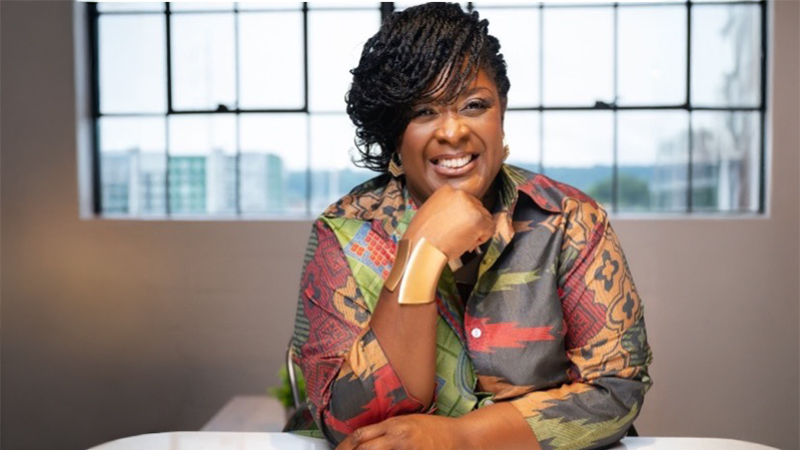Black Principals Matter: We need greater representation in schools


The face of education leadership is changing, but not fast enough. The appointment of Dr. Miguel Cardona as The Secretary of Education means that Latinx students will see someone who looks like them as the top education leader in our country. That kind of representation in the Secretary of Education’s office is invaluable at a time when the majority of public students are of color and nearly 5 million are English learners just like Dr. Cardona was.
The same is true for Black principals. Representation matters.
Research has found higher student achievement and better school outcomes specifically for teachers and children of color when a principal of color is at the helm. We know that leaders of color hold higher expectations. They provide more rigorous academic opportunities. They foster school environments that are more supportive and sustainable for teachers of color, who in turn promote better outcomes for Black and brown students.
New Leaders alum, visionary Black educator and principal coach, Karen Bryan-Chambers reflects on her years as a school leader in post-Katrina New Orleans. Like you, she had to move her school forward in the wake of ongoing crises. Her leadership in forging and implementing a shared vision lifted up students and the whole school community.
I never wanted to be a principal. I loved teaching. My idea of a principal was that you sit in the office. You do paperwork. You don’t socialize with children. You don’t help teachers to build community. I never saw principals lead instruction.
After Hurricane Katrina, I returned to New Orleans to teach. I was dismayed by the lack of instruction in my school. I became a principal because I believe it is the responsibility of every adult in the building to ensure that students learn at the highest levels. I wanted to make a difference outside of my 25 students. That was the most important thing. Being a principal was the only way to do it. I knew instruction, so I was excited to lead through an instructional lens.
In my first years as an elementary school principal, I used my autonomy to give students exactly what I thought they needed to be successful. I looked at the data. I redid the schedule to allocate more time for ELA instruction. I identified weekly curricular goals for every grade and teacher. I provided professional development and learning for teachers. I did everything by myself, but I didn’t always feel successful.
In my fourth year, I got a leadership coach. One day he asked me if I knew what my teachers said about me. No, I replied. He asked if anyone had given me feedback before. I said, no. Then he explained to me that they felt that I did all the work, that I didn’t empower people.
His honest feedback shifted my leadership. The next day when I got my staff together, I told them why I became principal. I shared my vision. Then we created a shared vision for our school and every teacher in it. We were so aligned. From that day forward, our shared vision drove our work.
I used my leadership to support and encourage them and help us work together. It didn’t matter your role, we depended on each other. When a teacher was going to be out, a paraprofessional observed the class for a week to make sure the children still received high-quality instruction in the teacher’s absence. When I realized we could have greater impact with smaller reading intervention groups, I asked our paraprofessionals if they could help. They were thrilled to push our vision forward.
How we modeled our shared vision to each other is what really built our school community and lifted up our students. It wasn’t my words by themselves; it was our actions that gave meaning to our vision. That year, our kids really excelled.
Mirroring the successes Bryan-Chambers and her school achieved, research affirms the lasting impact of effective principals and teacher diversity on closing the achievement gap. A study from Vanderbilt University found that Black and Hispanic students are better represented in gifted programs when they attend schools led by principals who share their racial identity.
Another longitudinal study found that African American teachers in elementary schools increase the longer-term likelihood of African American students attending college and decrease the likelihood of dropping out of high school, particularly among African American males. Teachers of color are also found to have higher levels of job satisfaction and lower turnover rates when their school principal is also a person of color.
While our national teacher corps has grown slightly more diverse in the past decades, a racial gap remains. Today, most teachers are white (80 percent) and female (77 percent). This mirrors the limited representation of principals of color: 11 percent African American and nine percent Latinx. Given the well-documented benefits for students when they have access to teachers who reflect their backgrounds, we need to prioritize efforts that increase the diversity of our national principal corps in order to retain qualified teachers of color.
With teachers of color leaving the profession at higher rates than their white colleagues, now is the time for us to diversify education at every level, from our nation’s education secretary to the classroom. Effective principals like Bryan-Chambers show us what is possible when we do.




.svg)
.svg)
.svg)
.svg)



.svg)
.svg)








